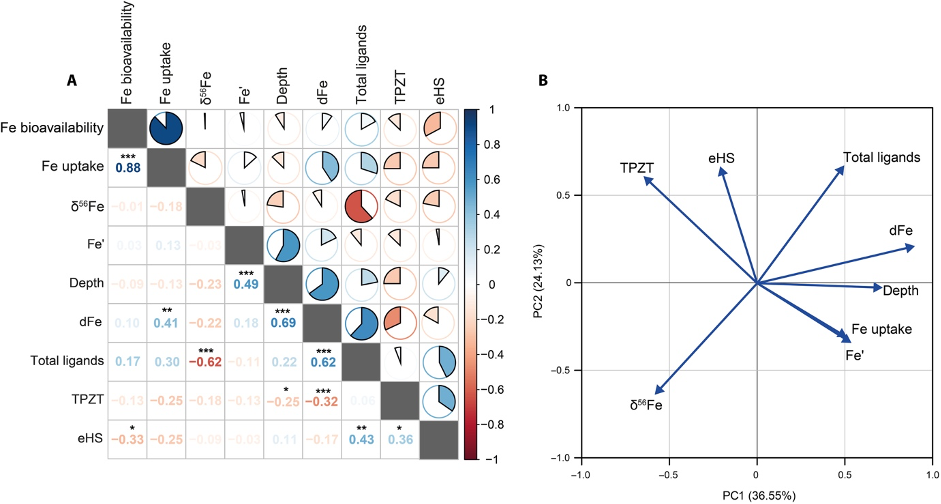Challenging results on iron bioavailability in the Southern Ocean
Fourquez and co-authors (2023, see reference below) conducted dissolved iron (dFe) uptake experiments with Phaeocystis antarctica, in order to establish processes controlling the dFe bioavailability in natural samples of the Southern Ocean. They show that the degree of bioavailability varied regardless of in situ dFe concentration and depth. This first result challenges the consensus that sole dFe concentrations can be used to predict Fe uptake in modeling studies. In addition, the range of this degree of bioavailability is wider than previously thought (<1 to ~200% compared to free inorganic Fe’). The authors also propose to couple dataset of Fe-binding ligands, dFe bioavailability, and δ56Fe. Contrasting again with previous assumptions, they observe a negative correlation between dissolved δ56Fe and total ligand concentrations, which might suggest against a role for complexation in driving dissolved δ56Fe toward higher values.

Reference:
Fourquez, M., Janssen, D. J., Conway, T. M., Cabanes, D., Ellwood, M. J., Sieber, M., Trimborn, S., & Hassler, C. (2023). Chasing iron bioavailability in the Southern Ocean: Insights from Phaeocystis antarctica and iron speciation. Science Advances, 9. Access the paper: https://doi.org/10.1126/sciadv.adf9696
